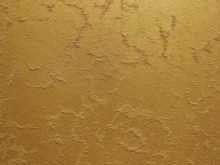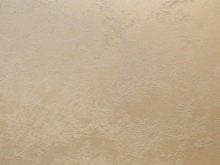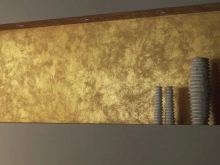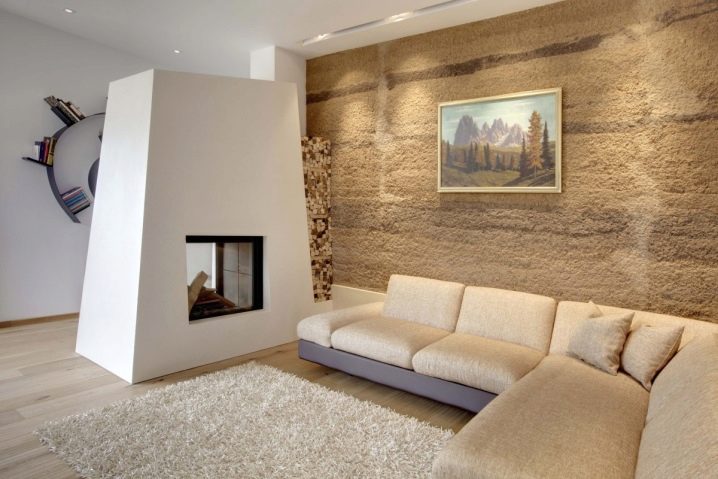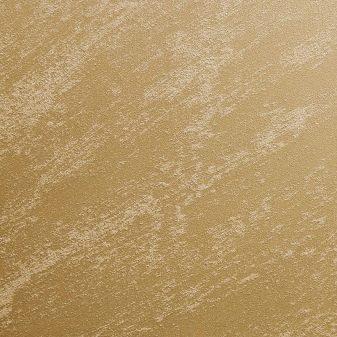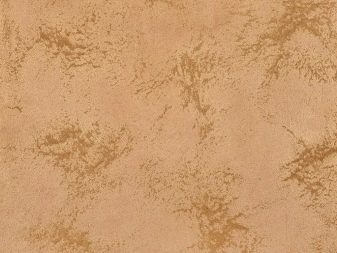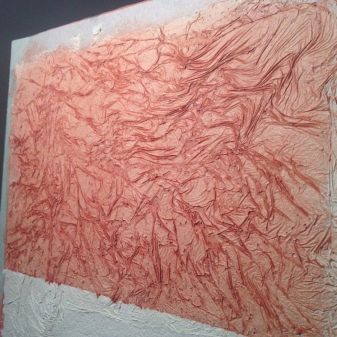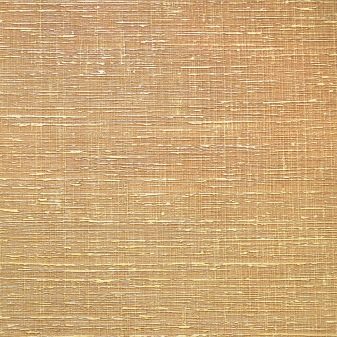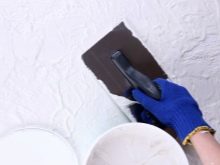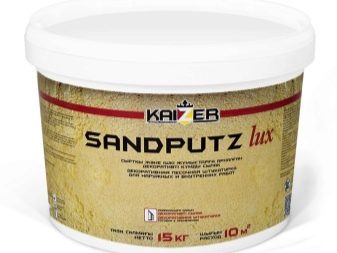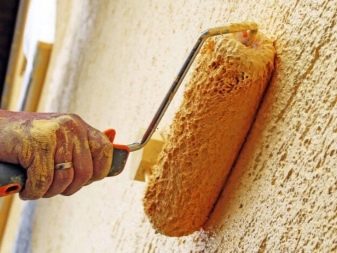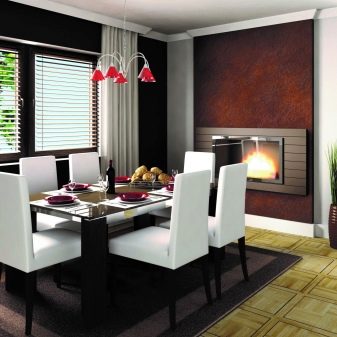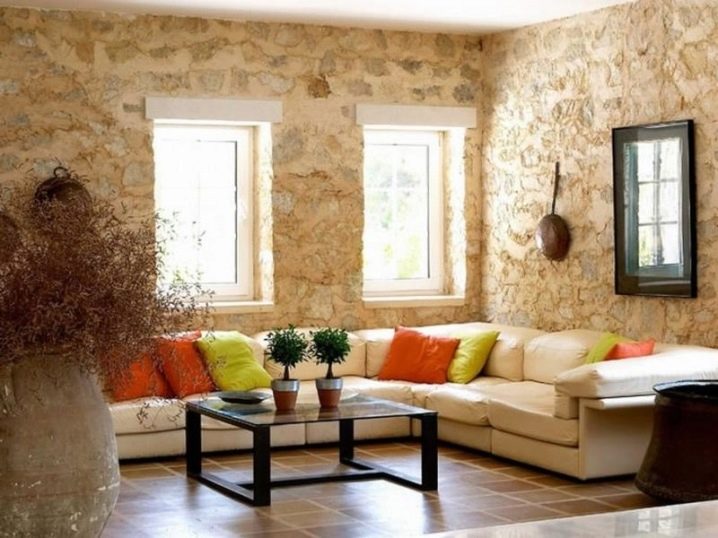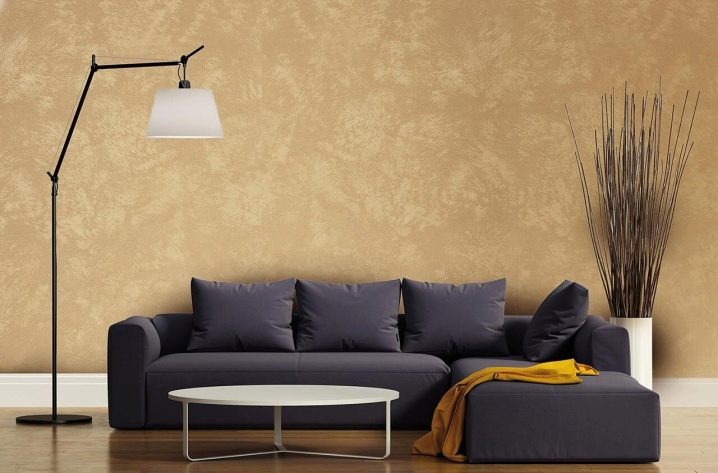Decorative sand "plaster": effects and composition options
Recently, it has been quite popular to use decorative plaster for wall decoration in residential and non-residential premises instead of wallpaper. One type of coating is the finishing material "sand". Let's see what it is and what are its features.
Special features
Decorative plaster is a finish, with the help of which various reliefs and other visual effects are created on the surfaces.
Thanks to this material, you can simulate expensive finishing materials, while significantly reducing costs.
Decorative plaster "sand" is quite widely used in interior design and it is not without reason, because The material has several advantages:
- The composition of the plaster includes quartz or river sand, which help to create a diverse coating on the surface of the walls.
- The material tolerates high humidity. The coating can be cleaned with a damp cloth. To enhance the moisture-resistant properties of the plaster "sand" can be coated with wax, after which the use of such finishing is permissible even in the bathroom.
- The composition is fully environmentally friendly, does not cause allergies.
- The material has a high vapor permeability, that is, the walls under it "breathe", the surface can absorb and then release moisture, maintaining an optimal microclimate inside the room.
- Plaster "sand" has a fairly long life, which reaches more than 10 years. In this case, the texture and brightness of colors is preserved in its original form.
- The composition has increased resistance to the formation of fungus and mold.
- A large range of colors will help you choose this coating for almost any interior.
- Due to its properties, such a coating is permissible to use outside the buildings.
The disadvantages of the material include its cost., but it is still significantly lower than that of good wallpapers.Also, the downside is the fact that this coating absorbs odors well, so using it in the kitchen is not recommended.
Kinds
Manufacturers produce several types of decorative sand plaster.
First of all, it can be classified by composition:
- Quartz. The composition of the material includes quartz sand, which increases the antimicrobial properties of this material. The relief of the composition is negligible.
- With river sand. This plaster creates a fairly deep texture on the surface, but this composition has almost no gloss.
In addition, decorative sand plaster can create a matte or nacreous coating. The latter gives the walls a velvety look, they can imitate silk-screen printing. Pearl effect is achieved by introducing into the composition of small particles of shells, various sparkles.
What effects can I create?
With the help of sand plaster, you can create various effects on the walls - they are the result of applying various techniques when applying the composition to the wall.
- Sand dune effect. At such drawing on the surface the gentle flickering picture is formed.This technique is used in ethnic styles that use the motifs of Morocco and Eastern countries. Here the main feature is a pronounced flicker. The effect is achieved through the use of additional toners and special pearl pastes, which increase the flickering of quartz particles.
- Sandy Wind effect. This technique is also often referred to as "sand vortices" or "sandstorm." This coating is applied in large coats in two layers. Every movement intersects with the next. Here you can also use additional pastes that will increase the brilliance and texture. After complete drying of the surface, it is subjected to grinding - this adds brightness to the applied composition.
- Shagreen skin effect. Here the second layer of the coating must be applied using a special stencil. In order for the relief to be more visible, the surface should also be sanded after complete drying.
- Burlap effect. When applying the coating using this method, a hard brush is used. Depending on the direction of movement changes the texture and the resulting figure.
Application rules
At its core, the application of plaster "sand" has virtually no difficulty.
Preparation of a bare wall and the subsequent application of plaster are carried out in several stages:
- Remove all possible stains and dirt from the surface. Vacuum the wall to remove the smallest dust particles.
- Check for the presence of all kinds of cracks and irregularities on the surface - on such flaws the “sand” plaster does not hold well and can crumble. With their presence it is necessary to conduct a primary alignment of the wall. To do this, use a plaster based on gypsum.
- After the surface dries, it is necessary to apply a layer of plaster on an acrylic base. After that, the surface is again cleaned with a vacuum cleaner.
- Next, the surface should be treated with a deep penetration primer.
- The next step is to prepare the plaster itself. The composition of the coating "sand" is of two types. The first is enough to stir, lifting from the bottom of a piece of quartz, river sand, nacre, the second must be diluted with water. To determine what kind of plaster, you should see the manufacturer's instructions.
- The composition is applied to the surface using a roller with a fur or fabric cover.
- After the first layer is applied, you should wait a couple of minutes, and then with the help of a foam rubber roller to give texture to the coating.
- At the next stage, using a spatula, the layer is slightly crushed. From the movements of this tool depends on the figure, which will be the result.
- Then you should wait until the surface is completely dry, and then, if necessary, treat it with special toners, pastes or wax.
Covering with decorative sand plaster is ready for use.
Interesting examples in the interior
- Designers often use decorative sand plaster in their projects. In the first photo, with this coating, a perimeter zone is trimmed. Here terracotta-colored plaster is used. The heat of the fire goes to the entire height of the wall, shimmering in the texture of the finish. This element immediately becomes the main focus of the whole room.
- Stucco with sandstone can even be used to finish the bath. The result is quite interesting interiors in a classic style.
- The golden tone of the walls in combination with wrought iron elements of the stairs make the room elegant and luxurious. Such a room will not require additional bright accents.
- Matte sand wall will be appropriate in the interior of the living room, decorated in ecostyle.
- And the walls decorated with plaster “sand” with imitation of masonry from stone blocks will look good in a room of country style.
- A wall coated with plaster "sand" can act as a background in the interior. To do this, use the material of pastel shades. In this case, the emphasis in the interior should be highlighted with the help of accessories or textiles.
The method of proper application to the wall of decorative plaster with the effect of "sand wind", see the following video.


